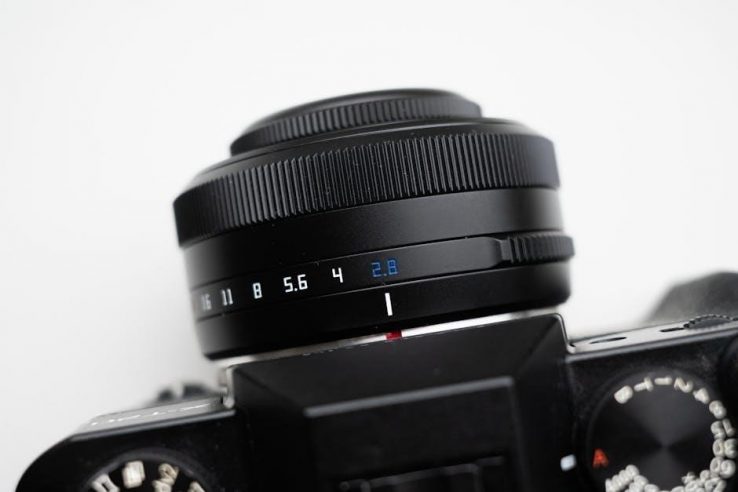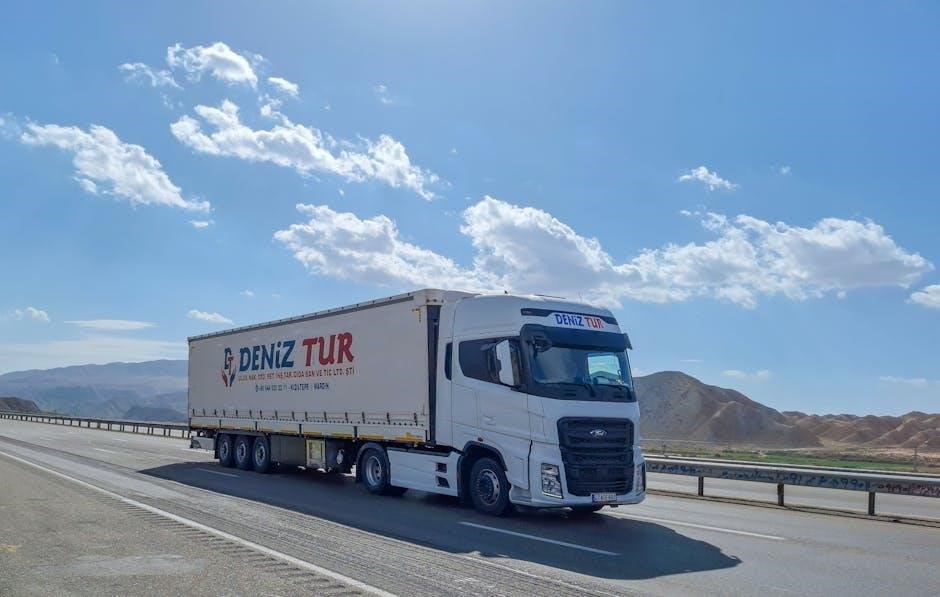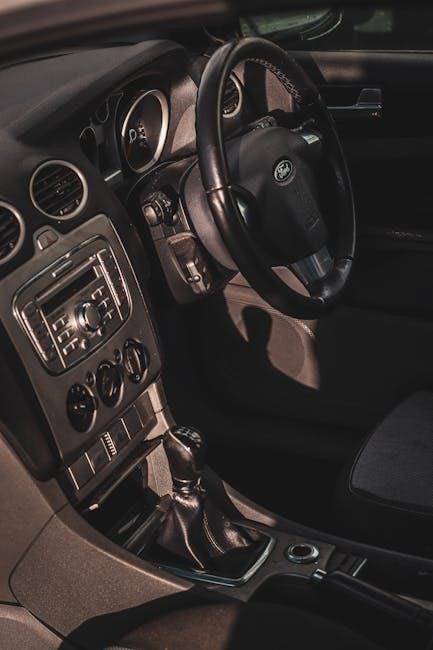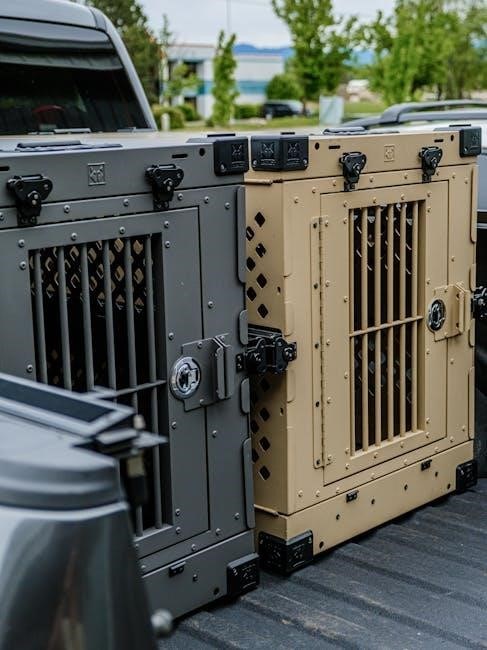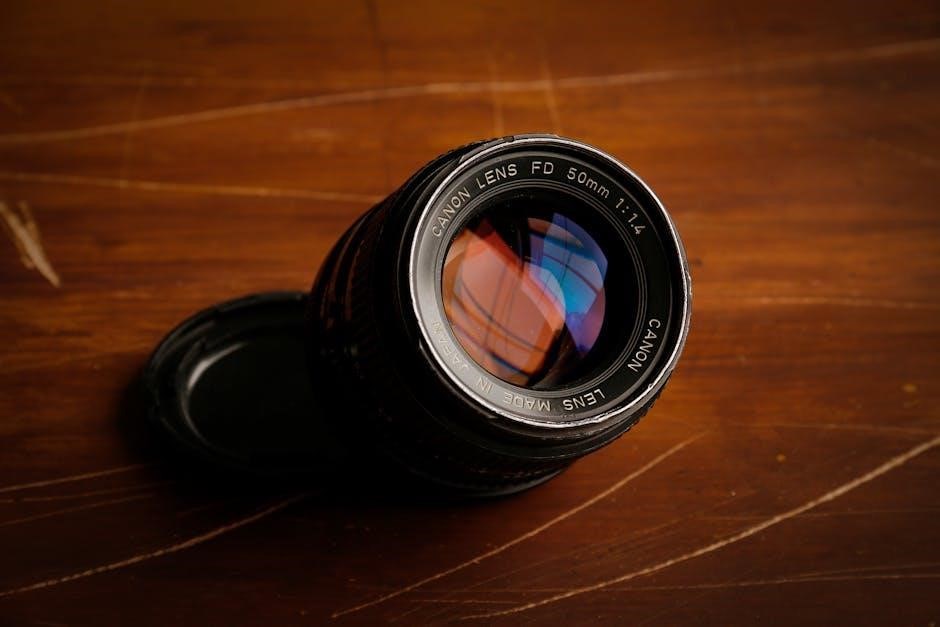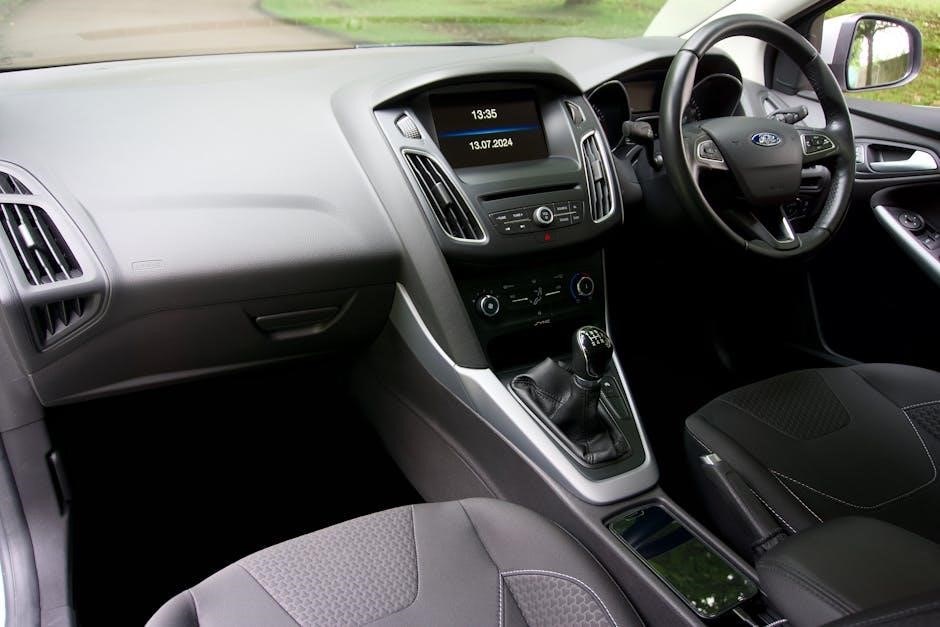Welcome to the Shadow of War Trophies Guide! This section introduces you to the world of achievements in Middle-earth: Shadow of War, highlighting their types, strategic depth, and the rewarding journey they offer. From story-driven milestones to combat mastery and collectible hunts, trophies enhance gameplay and challenge players to explore every aspect of Mordor. Discover how to unlock these achievements and elevate your gaming experience with our comprehensive guide.
1.1 Overview of Trophies in Shadow of War
In Middle-earth: Shadow of War, trophies serve as achievements that recognize player accomplishments, ranging from completing the main story to mastering specific skills or discovering hidden secrets. These trophies are categorized into Bronze, Silver, Gold, and Platinum tiers, with each tier representing varying levels of difficulty and prestige. They are designed to encourage exploration, strategic thinking, and mastery of the game’s mechanics. Trophies also provide a sense of progression and accomplishment, making the gameplay experience more engaging and rewarding. By earning trophies, players can showcase their skills and dedication, while also unlocking additional challenges and content.
1.2 Importance of Trophies for Completion
Trophies in Middle-earth: Shadow of War are essential for achieving 100% completion and fully experiencing the game’s depth. They serve as milestones, recognizing accomplishments such as completing the main story, mastering combat skills, or collecting rare items. Earning trophies unlocks rewards, boosts player motivation, and encourages exploration of Mordor’s vast open world. Each trophy tier—Bronze, Silver, Gold, and Platinum—represents a different level of achievement, with the Platinum trophy signifying full completion. Trophies also highlight the game’s replay value, as some require multiple playthroughs or specific strategies. By pursuing trophies, players can fully immerse themselves in the game’s world and challenges, ensuring a satisfying and rewarding experience.
1.3 Brief Guide to Getting Started with Trophies
Starting your trophy journey in Middle-earth: Shadow of War begins with understanding the trophy system. Familiarize yourself with the types of achievements available, such as story-related, combat, and collectible trophies. Begin by completing the main story to unlock foundational trophies and gain a sense of the game’s mechanics. Experiment with combat styles and explore Mordor to discover hidden challenges. Managing your Orc army and completing regional activities will also contribute to your trophy progress. Use the in-game Trophy List to track your achievements and plan your approach. Focus on completing lower-tier trophies first to build momentum, and don’t hesitate to consult guides for tips on tricky achievements. This structured approach will help you efficiently work toward 100% completion.

Story-Related Trophies
Story-Related Trophies are tied to key events and narrative milestones in Middle-earth: Shadow of War. Completing the main questline and making significant choices will unlock these achievements, rewarding your progression through the story. These trophies highlight the game’s cinematic moments and pivotal decisions, ensuring a rewarding journey through Mordor’s epic narrative.
2.1 Understanding the Main Questline
Understanding the Main Questline is essential for unlocking story-related trophies in Middle-earth: Shadow of War. The game’s narrative is divided into acts, each progressing Talion’s journey and his alliance with Celebrimbor. Completing main story missions and side quests drives the plot forward, with key moments tied to specific trophies. Players must follow the narrative closely, as certain decisions and actions are required to unlock achievements. The questline spans across Mordor, with regions like Minas Morgul and Cirith Ungol playing pivotal roles. Trophy hunters should focus on completing quests thoroughly, ensuring no critical path is missed. Progression through the story naturally unlocks many trophies, making it crucial to follow the narrative without skipping cutscenes or ignoring side content.
2.2 Key Decisions and Their Impact on Trophies
In Middle-earth: Shadow of War, key decisions significantly influence trophy progression. The game features branching narratives where player choices, such as forging alliances or defeating specific Orc captains, can unlock unique achievements. For example, decisions regarding the fate of captured enemies or the domination of regions can lead to trophies tied to leadership and conquest. Additionally, choices in the story, like sparing or executing certain characters, can trigger hidden trophies. Players must carefully consider their actions, as some decisions are permanent and affect multiple playthroughs. Trophy hunters should explore different outcomes to maximize their achievement count, ensuring they experience all possible story paths and their rewards. This strategic approach is vital for unlocking the full set of story-related trophies.
2.3 Hidden Story Achievements
Middle-earth: Shadow of War features several hidden story achievements that are not immediately apparent to players. These trophies are tied to specific choices, actions, or discoveries within the game’s narrative. For instance, sparing certain Orc captains or making unexpected decisions can unlock unique achievements. Some achievements are linked to the game’s more subtle storylines, such as encounters with mysterious characters or completing secret missions. Players must explore thoroughly and experiment with different interactions to uncover these hidden gems. While some achievements are easy to miss, they add depth and replayability to the game. Trophy hunters should pay close attention to their choices and actions, as even minor decisions can lead to surprising rewards. These hidden achievements make the journey through Mordor even more engaging and satisfying.

Combat and Skill-Based Trophies
Combat and Skill-Based Trophies reward mastery of Middle-earth: Shadow of War’s fighting mechanics. From perfect counters to devastating executions, these achievements highlight your prowess in battle. Unlock trophies by showcasing precise ranged shots, flawless melee combos, and strategic use of special abilities. Each skill-based trophy challenges players to refine their techniques and dominate enemies. These achievements are a testament to your combat excellence and add depth to your journey through Mordor.
3.1 Mastering Melee Combat for Trophy Progression
Mastering Melee Combat is essential for unlocking several trophies in Middle-earth: Shadow of War. Perfecting your timing for counters, dodges, and executions will help you earn achievements like “Untouchable” and “The Bright Master.” These trophies require precision and consistency in combat, showcasing your ability to dominate orcs without taking damage. To progress, focus on building flawless melee combos and utilizing Talion’s special abilities, such as Wraith abilities, to enhance your combat effectiveness. As you refine your skills, you’ll not only unlock trophies but also become a formidable force in Mordor. Practice against various enemy types to adapt your strategies and ensure a smooth path to platinum. This section will guide you through the techniques needed to excel in melee combat and claim these rewarding achievements.
3.2 Ranged Combat Techniques and Rewards
Ranged Combat in Middle-earth: Shadow of War offers a unique set of challenges and rewards, with trophies tied to precision and strategy. Achievements like “Eagle-eyed” and “Distant Thunder” require mastery of ranged attacks, such as headshots and long-distance kills. To unlock these, focus on upgrading your bow and learning enemy patterns. The Focus ability is crucial, as it slows time and enhances accuracy. Experiment with different ranged weapons and techniques to adapt to various orc types. Additionally, completing specific challenges, like no-aim shots, can grant exclusive rewards. Ranged combat not only adds variety to gameplay but also provides a strategic edge in trophy progression. By refining your aim and adapting to situations, you’ll unlock these achievements and strengthen your arsenal in Mordor.
3.3 Special Abilities and Their Role in Trophy Unlocking
Special Abilities in Middle-earth: Shadow of War play a pivotal role in trophy unlocking, offering unique ways to dominate enemies and progress through achievements. Abilities like Focus, which highlights weak points, and Fire Arrow, which ignites foes, are essential for specific trophies. For instance, the “Pyromancer” trophy requires incinerating a set number of enemies, while “Focus” mandates precise headshots. Upgrading these abilities through the skill tree enhances their effectiveness, making trophy attainment more accessible. Additionally, certain achievements, such as “Master of Shadows,” rely on stealth and ability combos. By mastering these special skills, players can efficiently unlock trophies tied to combat prowess and tactical gameplay, adding depth to their journey through Mordor.

Orc-Related Trophies
Trophies tied to Orc interactions highlight the depth of army-building and leadership in Middle-earth: Shadow of War. Conquering fortresses, recruiting captains, and managing loyalty shape these achievements, rewarding strategic mastery and domination over Mordor’s forces.
4.1 Building and Managing Your Orc Army
Building a formidable Orc army is central to achieving success in Middle-earth: Shadow of War, directly influencing trophy progression. Capturing and upgrading fortresses, recruiting powerful captains, and dominating regions are key strategies. Each fortress serves as a hub for your army, allowing you to assign captains to defend or attack. Upgrading facilities enhances your army’s strength and unlocks new abilities. Strategic decisions, such as purging weak captains or promoting loyal ones, shape your army’s effectiveness. The Nemesis System plays a crucial role, as unique Orc personalities and rivalries add depth to your force. A well-managed army not only aids in conquering Mordor but also unlocks specific trophies tied to leadership and domination.

Mastering army management requires balancing resources, such as gear and training, to ensure your captains are battle-ready. Avoiding common mistakes, like neglecting to defend your fortresses or ignoring Orc relationships, is vital for long-term success. By fostering loyalty and eliminating betrayers, you can create a cohesive and powerful force that drives your trophy journey forward.
4.2 Recruiting and Upgrading Orc Captains
Recruiting and upgrading Orc captains is a pivotal aspect of Middle-earth: Shadow of War, offering depth to your army and directly impacting trophy progression. Captains can be recruited through domination in combat, online conquests, or by breaking their will in captivity. Each captain has unique traits, strengths, and weaknesses, influenced by the Nemesis System, which creates personalized relationships and rivalries. Upgrading captains involves equipping them with powerful gear, training them in advanced skills, and promoting them to higher ranks. Strategic upgrades enhance their combat effectiveness and loyalty, reducing the risk of betrayal; Trophy-wise, focusing on recruiting legendary Orcs and achieving high levels of captain upgrades rewards players with prestigious achievements tied to leadership and power.
4.3 Dealing with Betrayals and Loyalty Issues
Loyalty among Orc captains in Middle-earth: Shadow of War is fragile, and betrayal can strike at any moment, impacting your progression and trophy goals. Betrayals often occur due to discontent, poor treatment, or the influence of rival captains. To mitigate this, monitor your captains’ loyalty levels, reward them with gear and promotions, and maintain a strong fortress defense. If a betrayal occurs, you can execute the traitor or engage in a duel to regain their loyalty. Managing loyalty effectively is crucial for maintaining a strong army and earning trophies tied to leadership and domination. Mastering these dynamics is essential for achieving the “Loyal to the End” and “Army of the Dead” achievements, showcasing your mastery over Mordor’s chaotic hierarchy.

Open World and Exploration Trophies
Explore Mordor’s vast regions, complete regional challenges, and uncover hidden secrets to earn exclusive trophies, enhancing your journey through Middle-earth: Shadow of War.
5.1 Exploring Mordor and Its Regions
Exploring Mordor and its diverse regions is essential for unlocking trophies in Middle-earth: Shadow of War. The game features vast open-world areas, each with unique environments, quests, and secrets. From the volcanic landscapes of Mount Doom to the lush forests of Nurn and the desolate wastelands of Cirith Ungol, each region offers distinct opportunities for discovery. By venturing off the beaten path, players can uncover hidden caves, complete region-specific challenges, and interact with NPCs that provide valuable insights. Trophy hunters should focus on fully exploring each area, as many achievements are tied to completing regional milestones. Use fast travel and the in-game map to efficiently navigate and ensure no corner of Mordor is left unexplored.
5.2 Completing Regional Activities and Challenges
Completing regional activities and challenges is a cornerstone of trophy progression in Middle-earth: Shadow of War. Each region in Mordor is packed with quests, puzzles, and enemy encounters designed to test your skills. Activities such as liberating slaves, defeating high-ranking Orc captains, and solving environmental puzzles are not only rewarding but also essential for unlocking certain trophies. Use your abilities like Elven Sight to locate hidden objectives and efficiently navigate the map. Trophy hunters should prioritize completing all regional challenges, as many achievements are tied to 100% completion of specific areas. This approach ensures a smoother journey toward earning the platinum trophy while immersing you deeper in the game’s world.
5.3 Discovering Hidden Locations and Secrets
Discovering hidden locations and secrets in Middle-earth: Shadow of War is crucial for trophy hunters seeking 100% completion. The game is filled with concealed areas, such as hidden caves, secret enemy encampments, and mysterious landmarks, each offering unique rewards. Exploring these locations often reveals valuable loot, including Ithilien Armor pieces and legendary Orcs. Use your Elven Sight ability to uncover hidden objects and pathways, as many secrets are cleverly disguised. Thoroughly investigating every region ensures you don’t miss out on hidden achievements tied to exploration. Remember, some secrets require creative problem-solving or specific actions, so don’t hesitate to experiment. Dedication to uncovering Mordor’s hidden gems will greatly enhance your trophy collection and overall gaming experience.

Collectible and Challenge Trophies
Collectible and challenge trophies in Shadow of War involve finding rare items like Ithilien Armor and defeating Legendary Orcs. These challenges add depth and reward dedication, enhancing gameplay.
6.1 Finding and Collecting All Ithilien Armor
Collecting all pieces of the Ithilien Armor set is a challenging but rewarding endeavor in Shadow of War. This armor set, inspired by the realm of Ithilien, offers unique bonuses that enhance Talion’s abilities. To unlock it, players must explore vast regions, complete specific quests, and defeat high-level enemies. The armor pieces are scattered across Mordor, often hidden in hard-to-reach locations or guarded by powerful orcs. Utilizing Talion’s traversal skills, such as grappling and jumping, is essential for accessing these areas. Additionally, some pieces require completing regional quests or defeating legendary orcs, making this trophy a true test of exploration and combat prowess. Dedication and thorough exploration are key to completing this iconic set.
6.2 Completing All Shadow of War Challenges
Completing all Shadow of War Challenges is a key part of the trophy hunt, offering diverse objectives that test skills and creativity. These challenges range from combat trials to exploration tasks, each with unique rewards. To tackle them, focus on understanding the specific requirements, such as defeating enemies with certain abilities or completing activities within time limits. Utilize Talion’s skills, like the bow for ranged challenges or stealth for silent takedowns. Some challenges are tied to specific regions or story progression, so thorough exploration and a well-rounded skill set are essential. Tracking progress and adjusting strategies as needed will help you conquer even the toughest challenges and earn elusive trophies.

6.3 Hunting and Defeating All Legendary Orcs
Hunting and defeating all Legendary Orcs is a thrilling challenge in Middle-earth: Shadow of War. These powerful foes are scattered across Mordor, each with unique strengths, weaknesses, and personalities. To succeed, use the Nemesis System to track their locations and understand their traits. Equip gear and abilities that counter their specific strengths, and consider recruiting orcs from your army to aid in battles. Defeating Legendary Orcs rewards rare gear and unlocks exclusive achievements. Be prepared for tough fights, as their abilities can be unpredictable. Persistence and strategic planning are key to overcoming these formidable enemies and claiming victory. Each Legendary Orc offers a unique experience, making this challenge both rewarding and memorable for trophy hunters.

Multiplayer and Online Trophies
Earn exclusive trophies by engaging in online conquests, defending your fortress, and competing in multiplayer modes. These challenges reward strategic gameplay and competitive prowess, enhancing your trophy collection.
7.1 Participating in Online Conquests
Online Conquests in Middle-earth: Shadow of War offer a dynamic multiplayer experience, allowing players to attack or defend fortresses. Engaging in these events rewards unique trophies, such as ‘Conqueror’ for successful assaults and ‘No Conquest is Easy’ for defending against invaders. To excel, focus on upgrading your fortress, recruiting powerful Orc captains, and strategically deploying defenses. Trophy progression requires consistent participation and skillful execution. These challenges not only test your fortress-building abilities but also your combat prowess, making them a thrilling addition to your trophy hunt. Mastering Online Conquests will significantly boost your trophy collection and enhance your overall game experience.
7.2 Defending Your Fortress Against Invaders
Defending your fortress in Middle-earth: Shadow of War is a strategic and rewarding experience that directly ties into trophy progression. Trophies like ‘The Once and Future King’ and ‘No Conquest is Easy’ are unlocked by successfully repelling invasions. To defend effectively, focus on upgrading your fortress defenses, recruiting powerful Orc captains, and strategically placing traps. Timing and skill are crucial, as invaders will test your fortifications and army strength. Trophy progression in this area requires a mix of preparation and real-time decision-making. Defending your fortress not only secures your dominance but also grants exclusive rewards, making it a key part of your trophy-hunting journey in Shadow of War.
7.3 Earning Rewards in Multiplayer Mode
Earning rewards in Middle-earth: Shadow of War’s multiplayer mode is a thrilling way to enhance your gameplay and trophy collection. By participating in online conquests and defending your fortress, you can earn exclusive rewards such as gear, XP boosts, and Orc recruits. These rewards not only strengthen your army but also contribute to trophy progression. Trophies like ‘Online Conqueror’ and ‘Seasoned Veteran’ are unlocked by achieving milestones in multiplayer. Regular participation and completing daily challenges can also yield additional bonuses, making multiplayer a rewarding and dynamic aspect of your trophy-hunting journey in Shadow of War.

Tips and Tricks for Trophy Hunters
Stay organized, track progress, and experiment with abilities to maximize trophy unlocks in Middle-earth: Shadow of War. Efficient gameplay leads to swift achievement completion and satisfaction.
8.1 Time Management and Prioritization
Effective time management is crucial for trophy hunters in Middle-earth: Shadow of War. Prioritize story missions first to unlock key abilities and access more gameplay features. Allocate specific sessions for exploration, combat practice, and collectible hunting to avoid overwhelming yourself. Use a checklist to track progress and focus on one trophy at a time to maintain momentum. Schedule regular breaks to prevent burnout and stay motivated. By organizing your playtime strategically, you can efficiently unlock trophies while enjoying the game’s depth and complexity. Proper planning ensures a smooth journey toward 100% completion, making your trophy hunt both rewarding and stress-free.
8.2 Utilizing Guides and Online Resources
Welcome to the section on leveraging guides and online resources for your Shadow of War Trophies journey. Utilizing detailed walkthroughs, trophy lists, and community forums can significantly streamline your progress. Websites like IGN, PowerPyx, and Reddit offer comprehensive guides tailored to specific trophies, saving you time and frustration. Online resources often include tips for tricky achievements, locations of hidden collectibles, and optimal strategies for combat and orc management. Additionally, video guides on platforms like YouTube provide visual aids for complex tasks. By referencing these tools, you can avoid common pitfalls and ensure you’re on the right track. This proactive approach will help you unlock trophies efficiently and enhance your overall gaming experience.
8.3 Avoiding Common Mistakes in Trophy Pursuit
Avoiding common mistakes is crucial when pursuing Shadow of War Trophies. Many players overlook the importance of saving frequently, which can lead to losing progress in case of errors or game crashes. Additionally, neglecting to explore all regions thoroughly may result in missed collectibles and hidden achievements. Some players rush through the main story without focusing on side quests, which can hinder trophy completion. Others underestimate the difficulty of higher-level orcs, leading to repeated failures. To avoid these pitfalls, prioritize a systematic approach, use online resources for guidance, and allocate time for exploration and strategy refinement. By being mindful of these common errors, you can ensure a smoother and more enjoyable trophy hunting experience in Middle-earth: Shadow of War.

